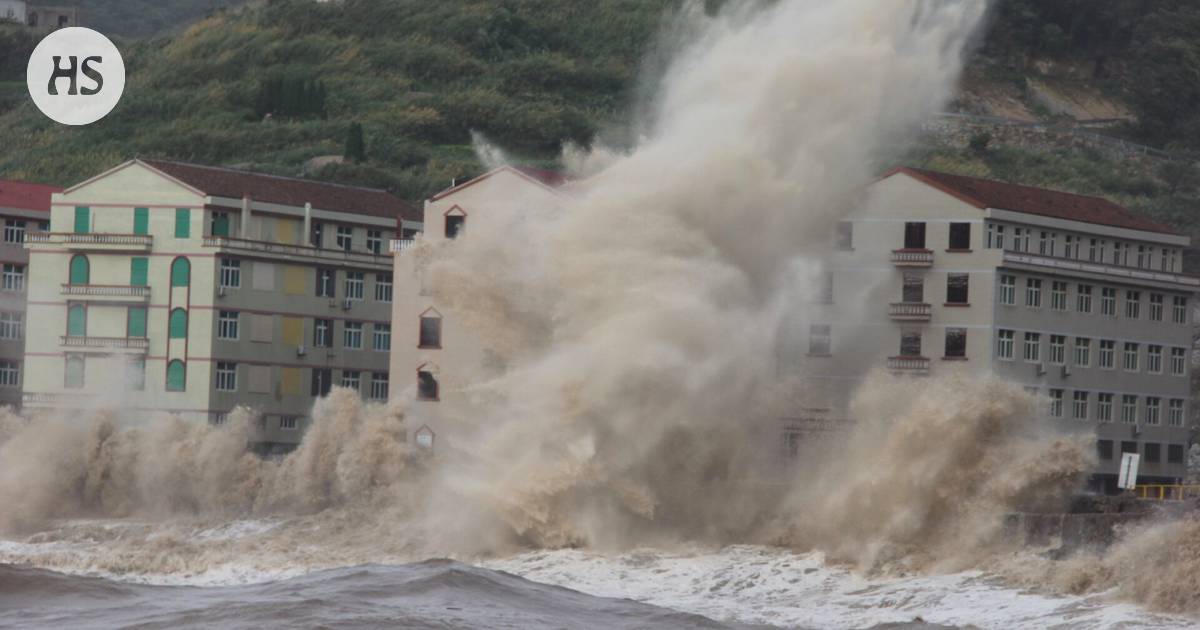Hurricanes need a sixth category, warn scientists.
When the world is warming, tropical cyclones are intensifying. They seem to have become so wild that the current storm classification is no longer sufficient.
Hurricanes are internationally classified on a scale of one to five. Now we need a sixth grade, US researchers suggest Michael Wehner and James Kossin.
The duo’s idea has matured from weather models and observations from the past four decades. The reform proposal is included in their to his researchwhich was published by the scientific journal Pnas.
The fifth category hurricane has no upper limit on the Saffir–Simpson intensity scale. Its developed at the US Hurricane Center Herbert Saffir and Robert Simpson In the early 1970s.
In a Category 5 hurricane, the strength of the winds exceeds about 70 meters per second. Such a hurricane causes “catastrophic” destruction, describes the US National Oceanic and Atmospheric Administration on its website.
Then a large part of the wooden houses are destroyed, and fallen trees and poles make it difficult to get around, the research institute describes. The electricity supply is interrupted, and everyday life in the storm-ravaged area becomes significantly more difficult.
The streets of New Orleans were covered in water and debris after Hurricane Katrina in August 2005.
For example, Hurricane Katrina, which destroyed the city of New Orleans in the United States in 2005 and caused the death of perhaps as many as 1,800 people, was defined as a category 5 hurricane.
A hurricane of the same category was Maria, which hit Puerto Rico in 2017. It caused the death of about 3,000 people.
These really strong hurricanes have become more common in four decades. A total of 197 Category 5 hurricanes were recorded between 1980 and 2021. More than half of them have raged in the last 17 years.
All the worst storms have happened in the last nine years.
”
“Getting caught in such a hurricane would be a very bad thing. Very bad.”
Five of the storms have crossed the sixth category boundary outlined by Wehner and Kossin. All of them have happened in the last nine years, suggesting that the pace has picked up.
The winds of the five most ferocious storms observed have sometimes howled at a speed of more than 300 kilometers per hour as an average of one minute. It corresponds to a speed of more than 80 meters per second at times.
The speed is of the same order as Ferrara’s, compares researcher Wehner, who works at the Lawrence Berkeley Research Institute.
“Getting caught in such a hurricane would be a very bad thing. Very bad,” Wehner says in The Guardian.
Of storms the most destructive Haiyan hit the Philippines in 2013. It caused the death of about 6,000 people in the densely populated nation. The wind speed was at times 315 kilometers per hour. Katrina’s gusts in 2005 remained at 280 kilometers per hour.
The population was evacuated from under Hurricane Katrina, but people also had to be rescued from flooded areas in New Orleans in 2005.
The strongest of the possible category 6 hurricanes seems to have been Patricia in October 2015. The winds blew at their fiercest in the eastern Pacific Ocean at a speed of over 340 kilometers per hour, says US Hurricane Center.
However, Patricia had time to weaken before arriving in Mexico. A few people were said to have died. Material damages were hundreds of millions of dollars.
Scale at the lower end, in a Category 1 hurricane, the wind speed is about 120 kilometers per hour, or about 33 meters per second. In Finland we talk about hurricanes, in the world we talk about hurricanes, typhoons and tropical cyclones.
Saffir-Simpson calculates wind speeds from one-minute averages, says a researcher at the Finnish Meteorological Institute Terhi Laurila. In Finland, the average wind is calculated as a ten-minute average, as recommended by the World Meteorological Organization.
The one-minute average for tropical storms used in the United States better describes the most violent winds that cause damage in tropical storms. The Saffir-Simpson scale aims to evaluate exactly these atrocities.
Published in Tiede magazine 4/2024.
